Search
Search Results
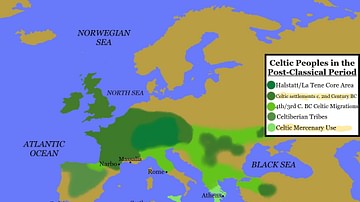
Image
Map of Celtic Peoples in the Post-Classical Period
A map showing the spread of Celtic-speaking peoples in Europe, and their migrations in the Post-Classical Period.
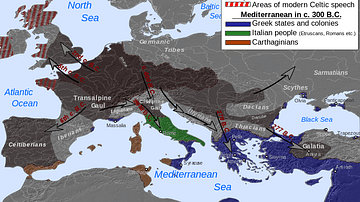
Image
Map of Celtic Expansion - 6th-3rd century BCE
A map showing the various campagins of Celtic tribes between the 6th and 3rd centuries BCE.
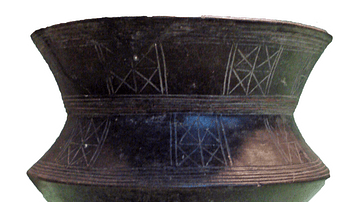
Image
Celtic Tripartite Vessel
A Celtic tripartite carinated pottery vessel. These vessels are made from three separate pieces, each with straight sides, which when assembled create an angular form. This example was found in a grave in the Marne region of northern France...
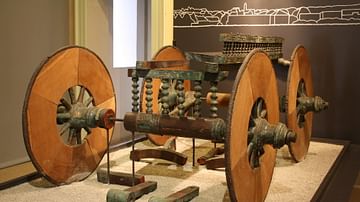
Image
Celtic Wagon
The remains of a Celtic wagon in bronze with wood reconstruction. 5th century BCE. (Archaeological Museum of Como, Italy)
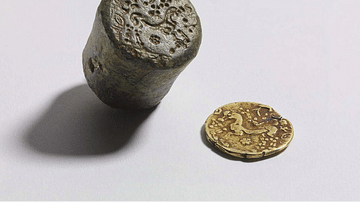
Image
Celtic Coin Die & Gold Coin
A Celtic coin die and gold coin showing a horse design from Bredgar, Kent, England, 2nd century BCE.
The British Museum, London.
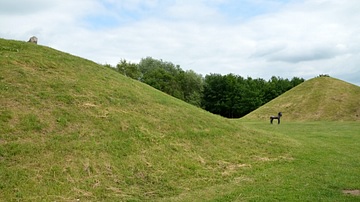
Image
Celtic Burial Mounds
Reconstructions of Celtic burial mounds dating to the La Tène period (5th to 1st century BCE). The mounds were surrounded by circular ditches of 0.6 metres and 1.2 metres. European Archaeological Park of Bliesbruck-Reinheim, Germany / France...
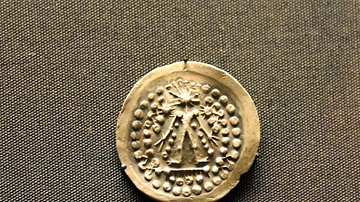
Image
Celtic Coin from Thrace Copying Greek Inscription
Early Iron Age Celtic people copied Greek coins, often faithfully reproducing their designs and inscriptions. This suggests that Thracian die-engravers were illiterate, as legible Greek letters were gradually replaced by abstract patterns...
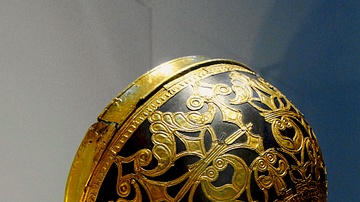
Image
Celtic Bowl, Schwarzenbach Burial
A Celtic bowl with embossed gold leaf decoration from the princely burial at Schwarzenbach, Rhineland, Germany. 5th century BCE. (Staatliche Museen zu Berlin)
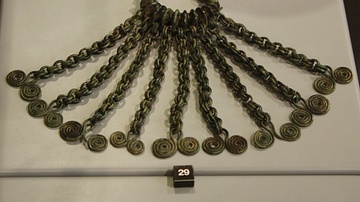
Image
Celtic Bronze Fastener
A Celtic bronze fastener, 7th century BCE. (Archaeological Museum of Como, Italy)
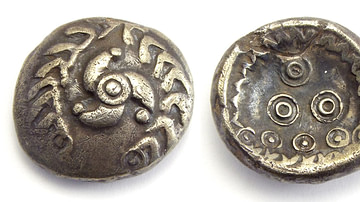
Image
Celtic Regenbogenschüsselchen
An example of a Celtic coin known as a regenbogenschüsselchen of southern Germany and Bohemia. Electrum, 5th-1st century BCE.